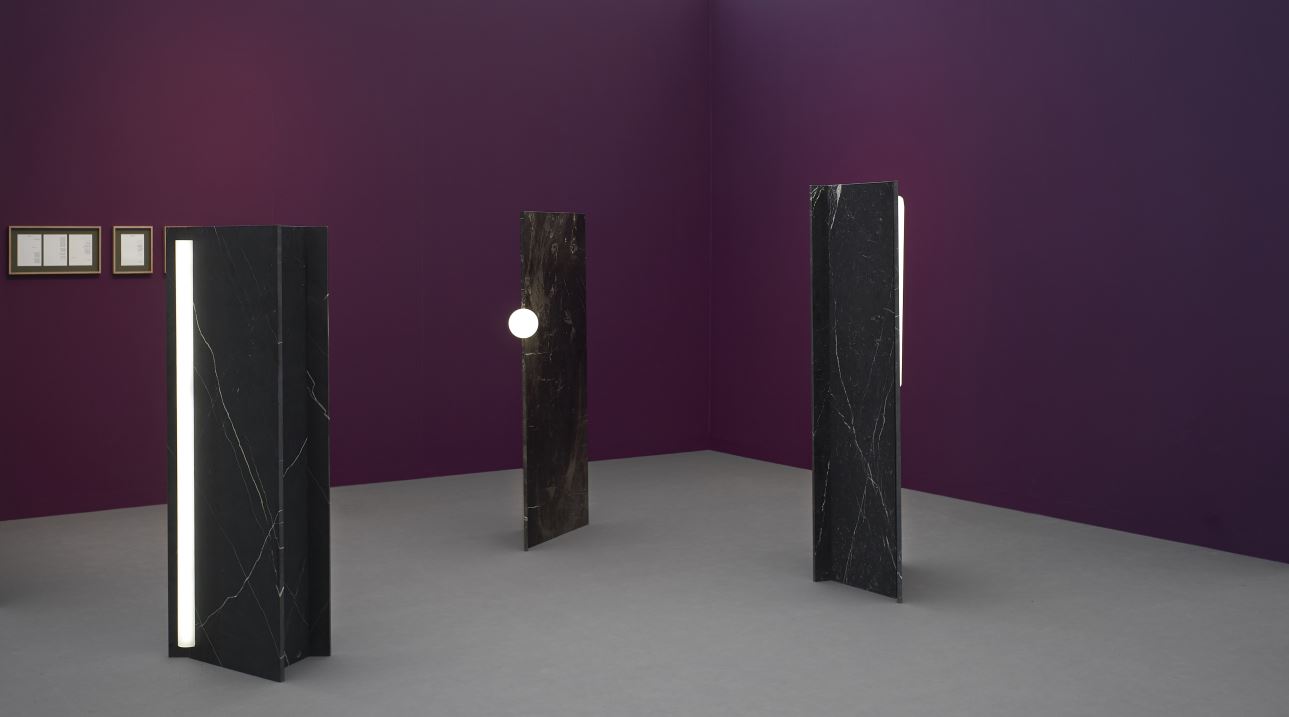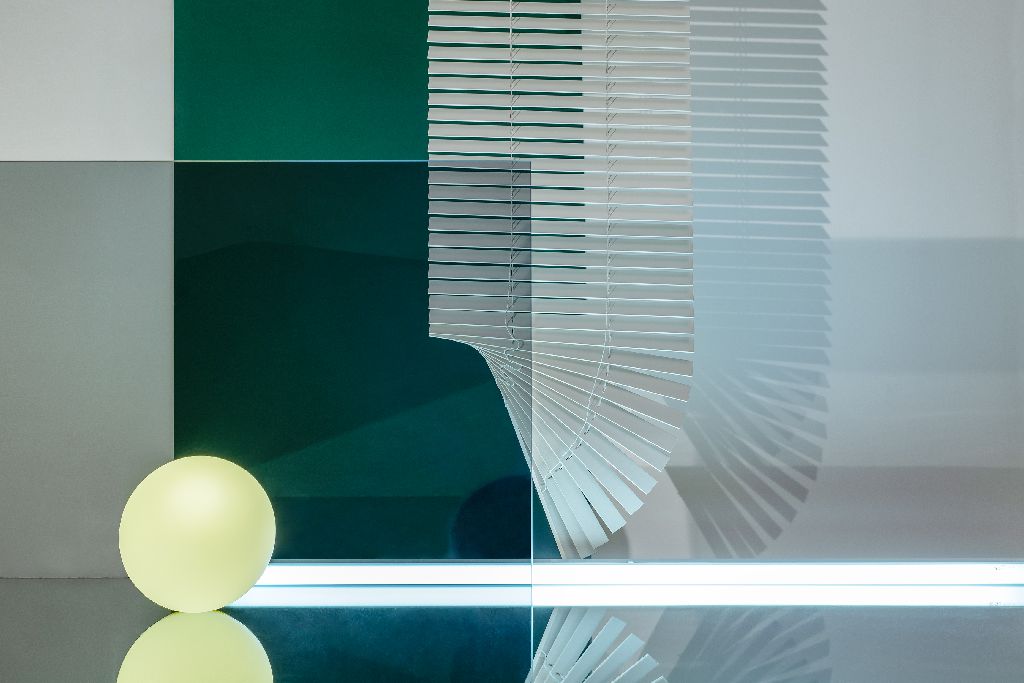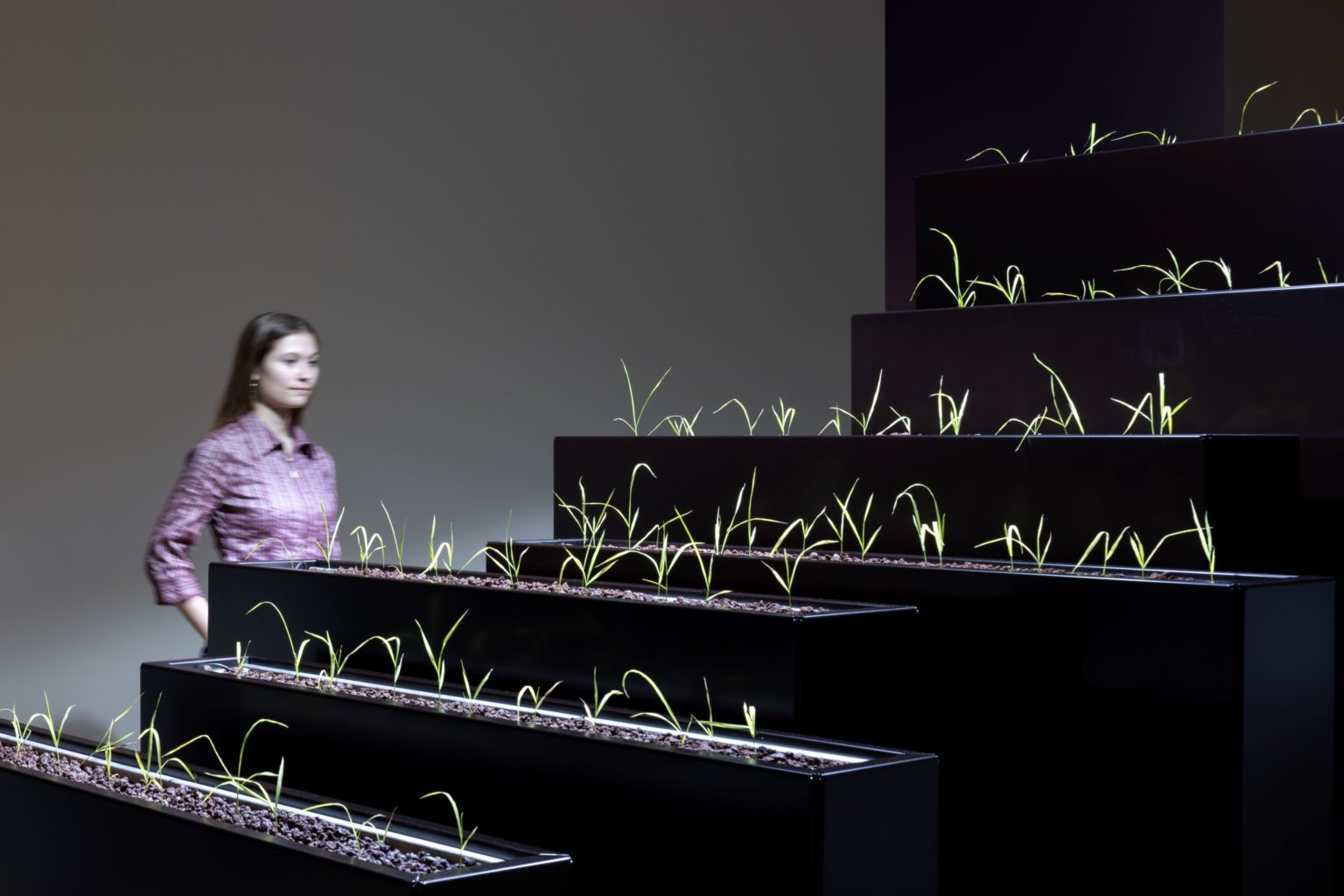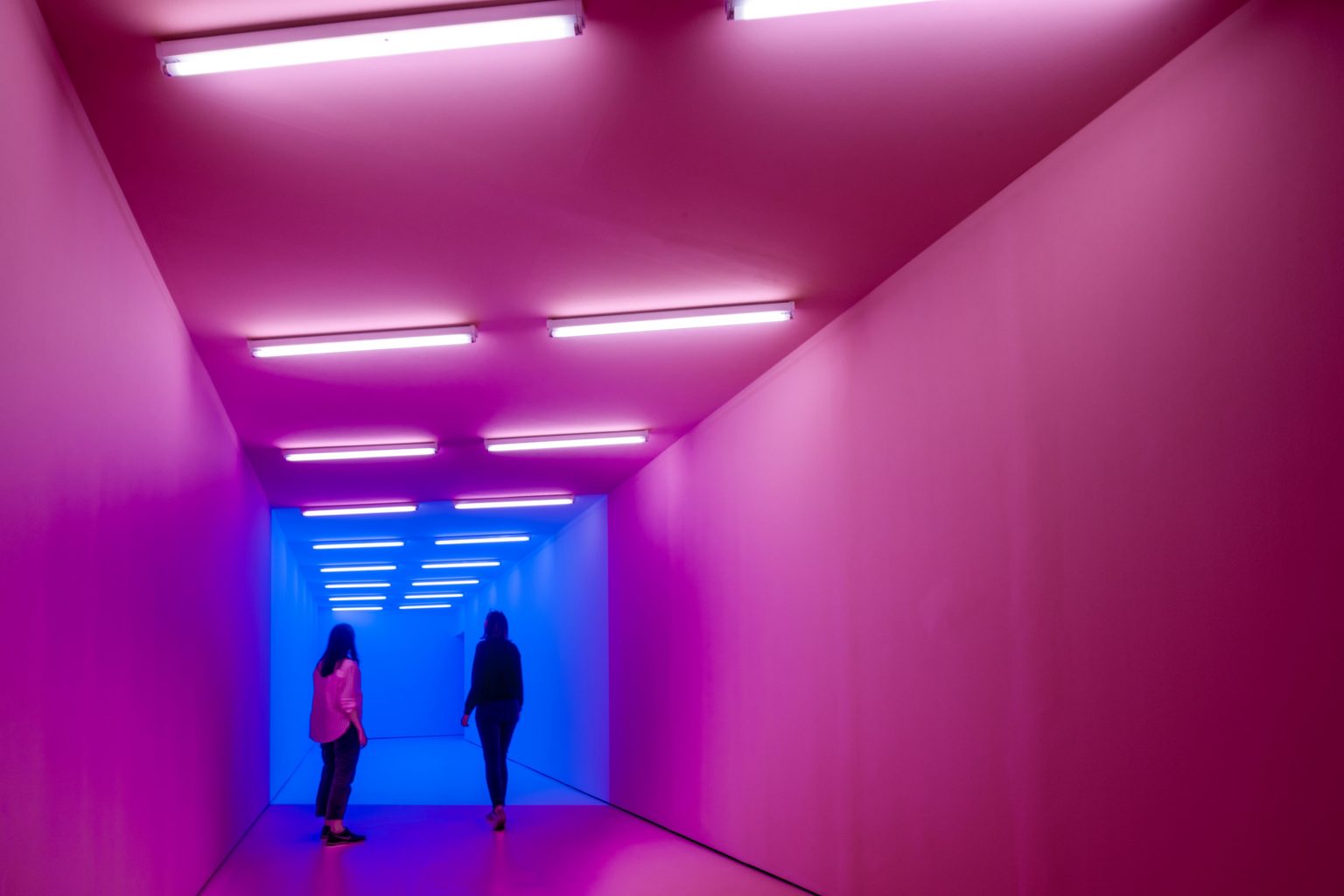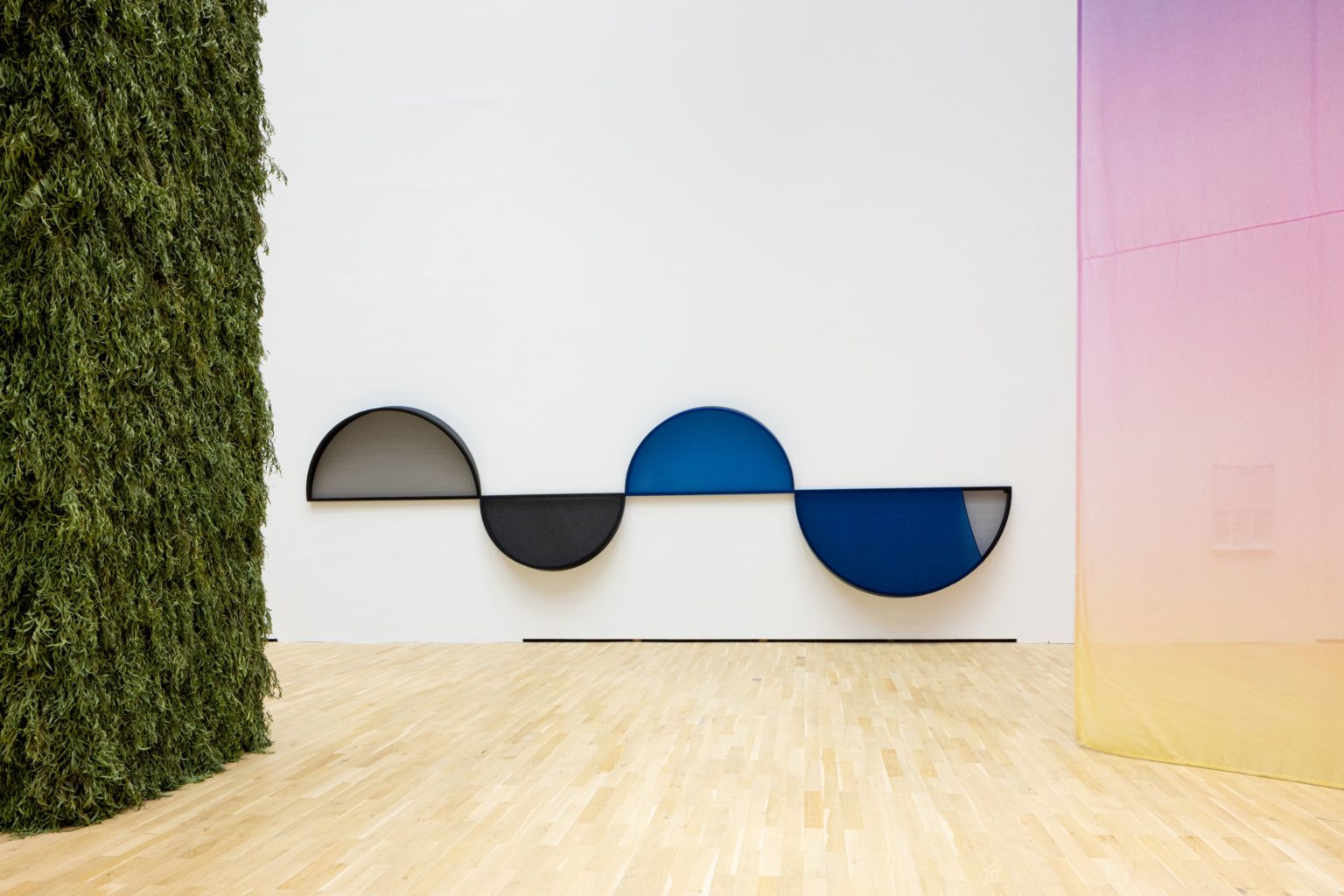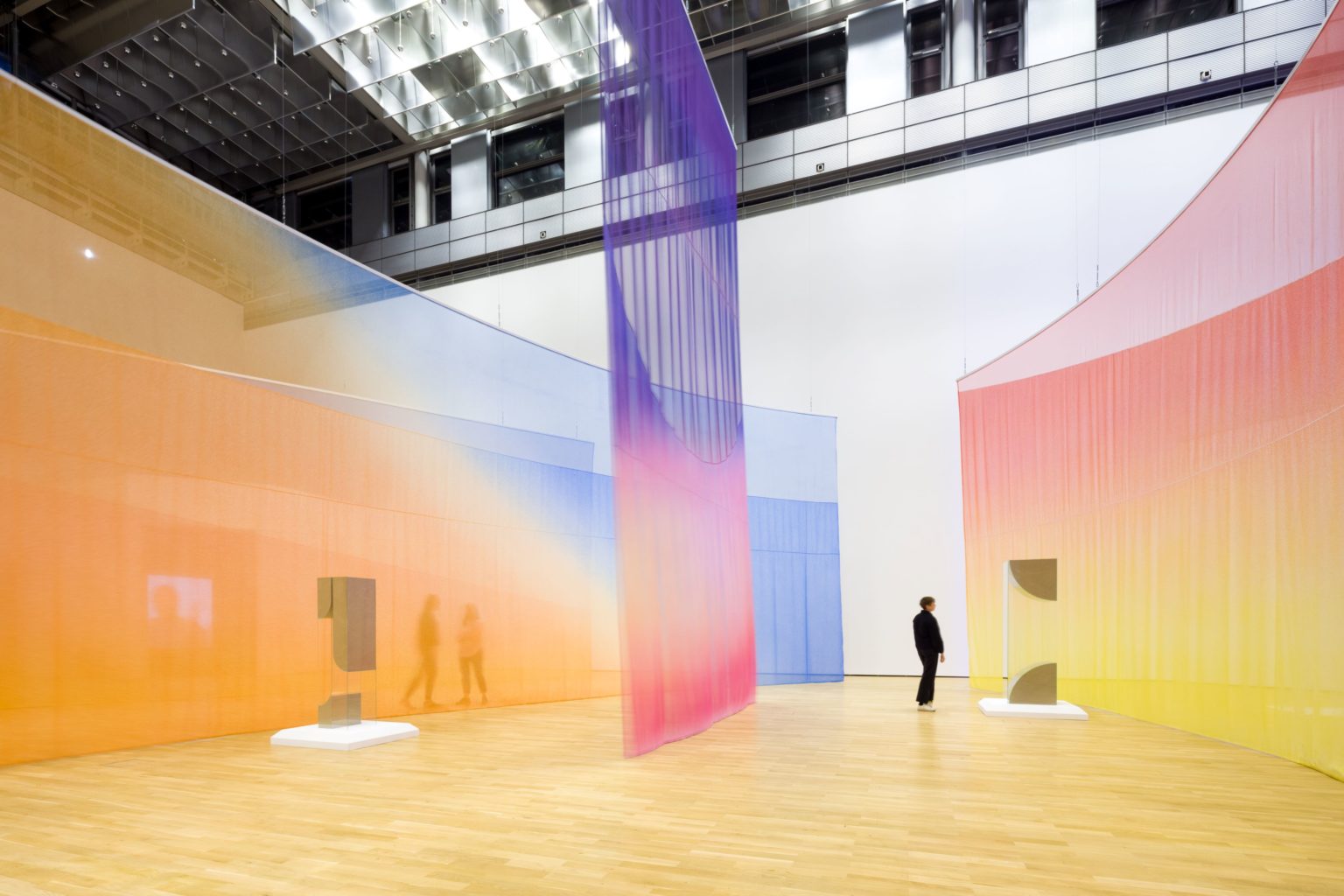PRESENTATION: Kapwani Kiwanga-The Length of the Horizon
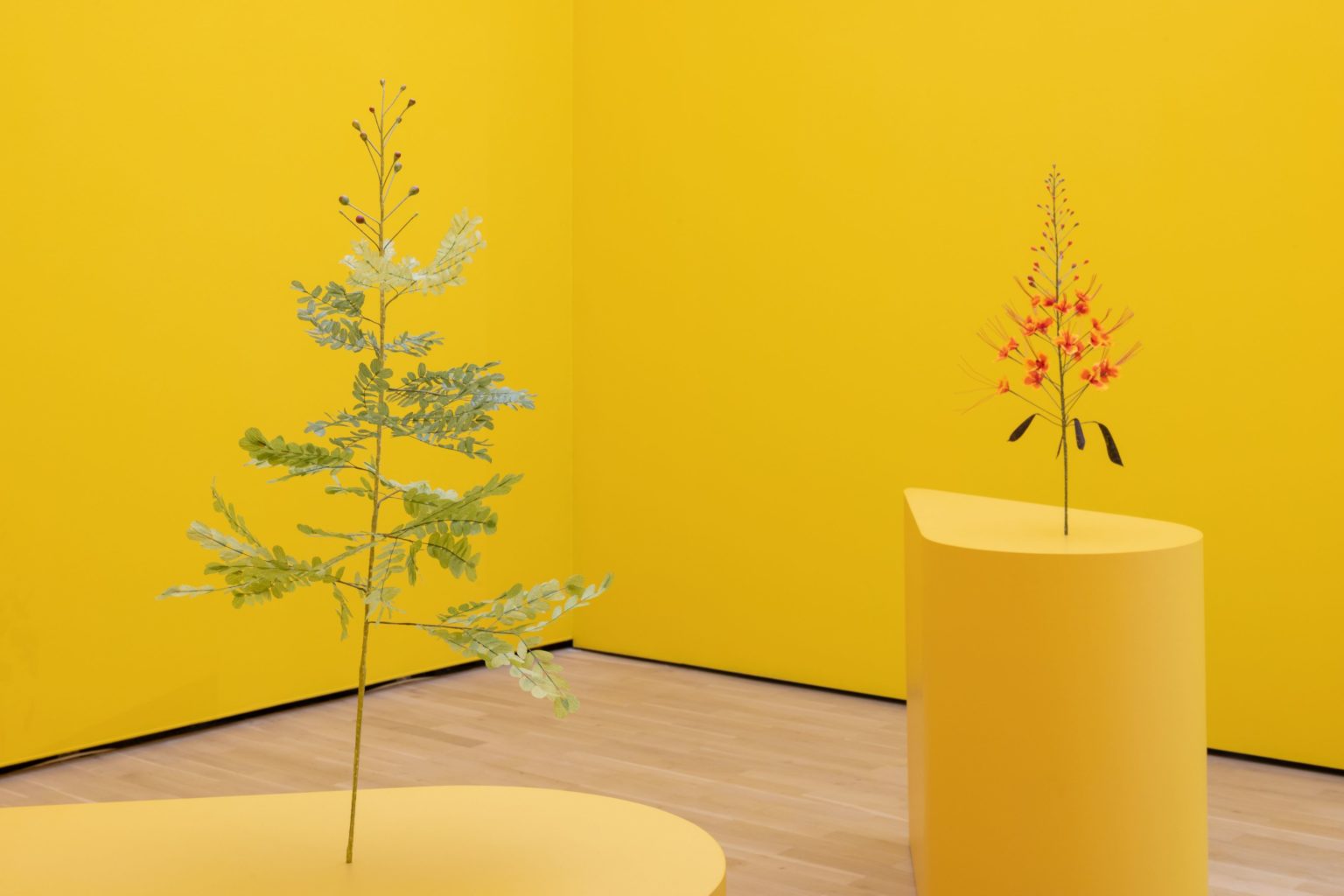 Kapwani Kiwanga studied anthropology and comparative religion at McGill University, in Montreal, and art at Beaux-Arts de Paris. Her work is research-driven, instigated by marginalized or forgotten histories and articulated across materials and mediums, including sculpture, installation, photography, video, and performance. At Radcliffe, she is conducting research into botany, legislation, and history to inform the creation of performative, painting, and silkscreen works that examine the relationship between plants and resistance through historic examples of acts of emancipation.
Kapwani Kiwanga studied anthropology and comparative religion at McGill University, in Montreal, and art at Beaux-Arts de Paris. Her work is research-driven, instigated by marginalized or forgotten histories and articulated across materials and mediums, including sculpture, installation, photography, video, and performance. At Radcliffe, she is conducting research into botany, legislation, and history to inform the creation of performative, painting, and silkscreen works that examine the relationship between plants and resistance through historic examples of acts of emancipation.
By Dimitris Lempesis
Photo: Kunstmuseum Wolfsburg Archive
The exhibition “The Length of the Horizon” is the first institutional and comprehensive mid-career retrospective of the Kapwani Kiwanga’s work worldwide. Research-based, thematically highly topical, and future- oriented—these terms can be used to describe the impressive oeuvre of Kapwani Kiwanga. The Canadian and French artist recently received numerous international awards and will represent Canada at the 60th Biennale di Venezia in 2024. The exhibition brings together works in all media from Kiwanga’s artistic beginnings to the present day, including the highly acclaimed installation “Terrarium” (2022), her sixteen-meter-long colored light tunnel “pink-blue” (2017), and her sculptural series “Glow” (2019- ). Kapwani Kiwanga’s expansive works come together in the exhibition to create a uniquely aesthetic, insightful, and physical experience. The artist searches for a vocabulary to look at existing structures and power relations from new perspectives in order to think about them differently in the future. The visually impressive works initially appeal to the viewer in a very sensual way. At second glance, the historical-political dimensions of her works reveal themselves, some of which surprise and unsettle. Glass, two-way mirrors, shade cloth, stone, sand, sisal, and plants, as well as light and color, for Kapwani Kiwanga, these are not value-neutral materials, but rather materials charged with content. Their choice is never purely aesthetic. Rather, she translates social, geological, ecological, historical, and diasporic themes into powerful artistic statements. She stages material histories in which the material is at once ambassador, metaphor, bearer of experience, and socio-political instrument. In this way, she shakes the foundations of our cultural socialization. She refines our sense for “hidden” social mechanisms, structural injustices, as well as global and everyday power asymmetries. “The Length of the Horizon” begins for visitors with a surprising spatial and color experience: The walk through the colored light corridor “pink-blue” marks the transition from the entrance area of the museum to the heart of the presentation. The tunnel-like installation not only forces visitors into an austere architecture, but the immersive experience also reveals how light and color are used in everyday urban contexts and disciplinary architectures to control behavior. The work references research on the psychological effects of color. For example, Baker-Miller pink is said to have an aggression-reducing effect on prisoners. For “pink-blue”, Kapwani Kiwanga combines this pink tone with fluorescent blue light, which is also used to regulate behavior and prevent intravenous drug use in public spaces, as veins are difficult to locate in this light. In the approximately 1,800 m2 exhibition hall, the artist’s key works come together to form a pointed tour through her oeuvre. It becomes clear how Kapwani Kiwanga uses the effective power of color, light, and material to tell global histories from new perspectives. While in the powerfully colorful installation “The Marias” (2020) it is the bright yellow of the walls and the pedestals that initially captivates the viewer, Kapwani Kiwanga uses the delicate paper versions of the peacock bush to address the toxic nature of the ornamental plant. The artist works with a similar visually enticing effect in her installation “Terrarium” (2022), which she developed for the main exhibition “The Milk of Dreams” at the 59th Biennale di Venezia and consists of four semi-transparent fabric panels (Sunset Horizon) and three “Hour Glass” sculptures. “Terrarium” explores different uses of natural resources, in this case quartz sand for making glass or shale oil and gas extraction through fracking. The “Hour Glasses” exhibit their own material, evoking the long iconography of the hour glass as a vanitas symbol of human life and transferring this idea of finitude to the state of our planet, to the way its inhabitants deal with raw materials and nature, and thus to the Capitalocene, a sharpened reading of the Anthropocene. Especially for her exhibition at the Kunstmuseum Wolfsburg, Kapwani Kiwanga has developed an eight-meter-wide wall piece made of shade cloth. The variably colored fabric nets that Kapwani Kiwanga uses to develop her so-called shade cloth works as wall objects, expansive installations, and sculptural screens are actually used in industrial agriculture to allow plants to thrive better or outside of their original habitat. Metaphorically, the nets with their shading properties can stand for European colonial projects in which ecosystems in the colonies were reshaped to either better suit European ecosystems or to facilitate regional mass cultivation with high yield increases.
Photo: Kapwani Kiwanga, The Marias, 2020, paper flowers, individual bases, color, dimensions variable, loan from the IAC Collection, France, Courtesy the artist and Goodman Gallery, Cape Town, Johannesburg, London / Galerie Poggi, Paris / Galerie Tanja Wagner, Berlin, Collection Institut d’art contemporain, Villeurbanne/Rhône-Alpes Remai Modern Collection Fondation LUMA Collection © VG Bild-Kunst, Bonn 2023, Photo: Marek Kruszewski
Info: Curator: Uta Ruhkamp, Curatorial Assistants: Veronika Mehlhart, Dino Steinhof, Kunstmuseum Wolfsburg, Hollerplatz 1, Wolfsburg, Germany, Duration: 16/9/2023-7/1/2024, Days & Hours: Tue-Sun 11:00-18:00, www.kunstmuseum.de/en/
